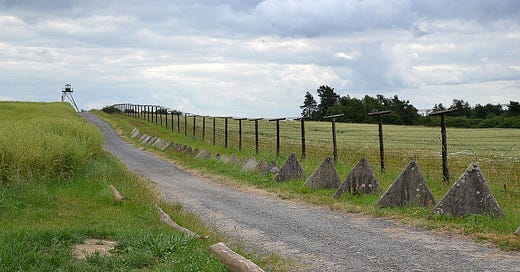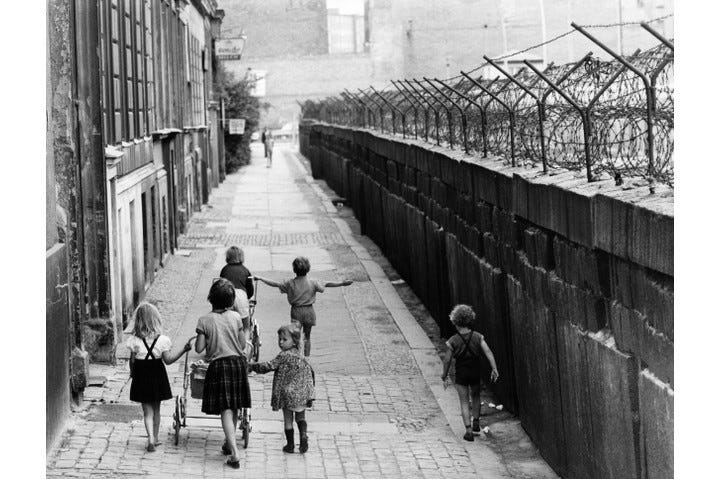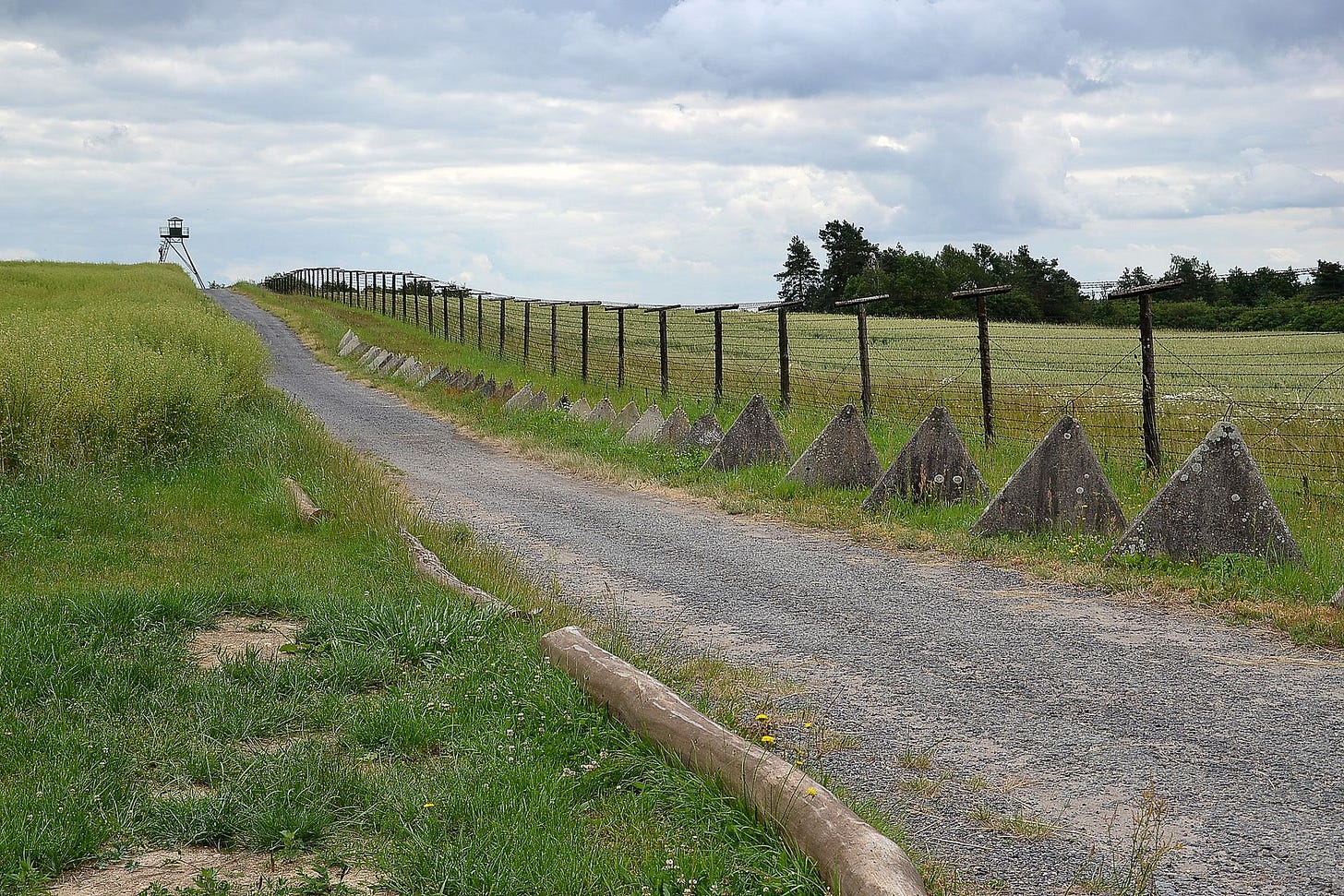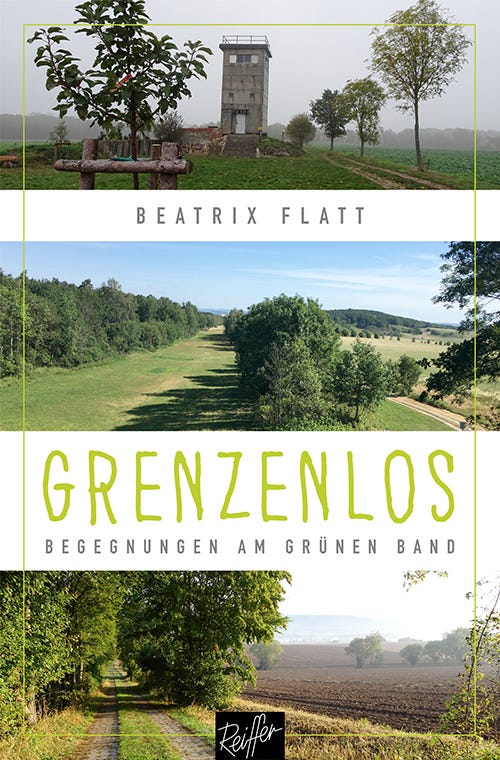The Berlin Wall was built the year I graduated from West Aurora High School, 1961. By that time, The Iron Curtain between the Soviet Union and Europe had existed for over 15 years.
The threat of nuclear war was palpable.
I remember thinking that one wrong decision, a hawkish rogue in either side’s military, or some technological glitch - could destroy us all in an instant. That fear was constantly in the background.
The Iron Curtain was a figurative political border, but in Germany it was was a physical one which divided East Germany, part of the Soviet Union, from West Germany, an independent, free nation. The Iron Curtain dividing East was concrete and fencing with watchtowers and metal mesh made to cut fingers when anyone attempted to climb it. There were sensors to detect those who tried to leave the Soviet Union and land mines, guards with hand guns (the Russian version of AK-47s) to deter attempts at crossing the open area on the East German side. There was a 1640 foot wide protective zone strictly controlled and an additional 3.1 mile restricted zone on the East side. Houses, trees, and whatever might provide a place to hide were removed from the 1400 kilometers (870 miles) of the divide. There were many hundreds of dogs to discover and track down would be escapees.
From Wikipedia: Preserved part of "iron curtain" in the Czech Republic. A watchtower, dragon's teeth and electric security fence are visible.
I remember hearing about people’s movements being monitored and restricted. Now that I have been here, staying with Lorenz and Trixi for a month in an area of Germany where villages and towns, families and communities were separated from one another, I have at least caught a glimpse of the trauma people endured for forty years.
Lorenz grew up in Helmstedt just two or three kilometers from the fence with all its armaments and fortifications. His wife, author Beatrix Flatt (Trixi for short) has hiked the entire length in Germany of where the wall stood, and she interviewed people who lived on both sides. She has written a book: Grenzenlos: Begegnungen am Gruenen Band with pictures of people and places and some of the stories she collected. She and others would like the former symbol of separation and hostility to become a symbol of community, life together without borders.
Where the wall once was is now “The Green Belt,” an extraordinary nature and wildlife preservation area that follows the route of the former Iron Curtain.
The Green Belt at Schaalsee. (Klaus Leidorf)
From the European Green Belt Initiative
“Our vision: The European Green Belt, our shared natural heritage along the line of the former Iron Curtain is to be conserved and restored, to function as an ecological network connecting high-value natural and cultural landscapes whilst respecting the economic, social and cultural needs of local communities.
An extraordinary ecological network and living memorial landscape has developed along the former Iron Curtain, which divided the European continent into East and West for nearly 40 years. Along 24 countries and more than 12,500 kilometres – from the Barents Sea at the Russian-Norwegian border, along the Baltic Coast, through Central Europe and the Balkans to the Black and the Adriatic Sea – the border zone granted nature a pause and has created a zone of life. As the European Green Belt snakes from north to south it passes through a huge variety of European landscapes. Today, the European Green Belt forms the backbone of a Pan-European ecological network and provides a significant contribution to European "Green Infrastructure".
The European Green Belt Initiaive aims to harmonise human activities with the natural environment and to increase opportunities for the socio-economic development of local communities.”
The first of many interviews I plan to conduct with people I meet on my travels, I hope you enjoy this conversation between Trixi and myself.
- Peter








Peter, I can't wait for more interviews! The transformation you've described here is astounding. Grenzenlos looks fascinating as well, thank you!